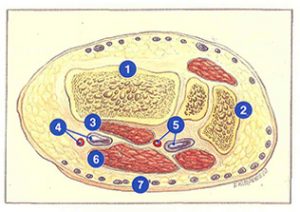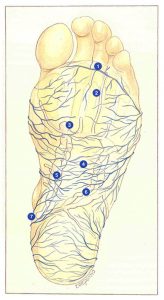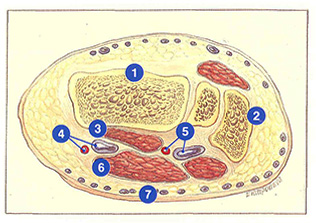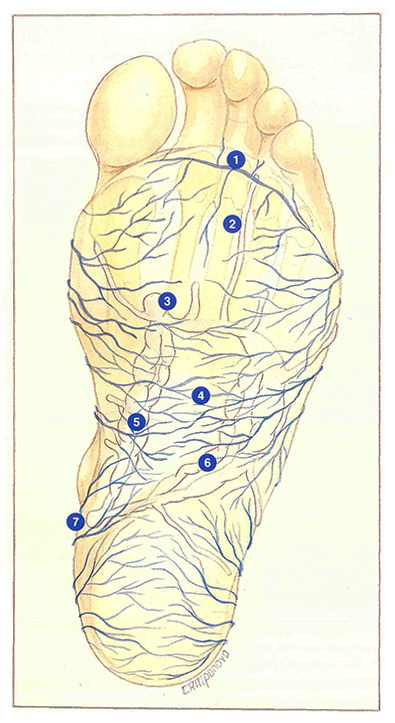Deep plantar venous arch
The superficial dermal and subdermal venous network, also called Lejars’ plexus, is composed of very fine venules, less than 1 mm in diameter (Figures 109 et 110). They line the entire plantar surface of the feet, including the plantar arch and heel. The constituent venules of this superficial network drain into marginal veins of the foot via numerous small valve-bearing collectors.
The deep plantar venous arch constitutes the true blood reservoir of the venous pump of the foot. It comprises two very large pedicles which are often duplicated: medial plantar veins and lateral plantar veins. Posteriorly, they drain into the posterior tibial perforating vein, which gives rise to the posterior tibial vein with a diameter of 5 to 6 mm. Anteriorly, these veins converge onto the perforating vein of the first intermetatarsal space. which gives rise to the pedal vein, and then the anterior tibial vein (diameter: 3 to 4 mm). Note that the much larger peroneal vein arises in the distal part of the leg.
Medial plantar veins are short (5 to 6 cm), with a caliber not exceeding 2.5 to 3 mm. In contrast, lateral plantar veins are long (12 to 1 °3 cm) with a very large diameter (4 to 5 mm). All these collecting veins present fusiform dilatations: the fusiform sinuses.


Further reading
Gillot V. Veines plantaires et pompe veineuse. Phlébologie, 1995, 48: 49-70.
Scurr J.H., Coleridge Smith P. La pompe musculaire du pied importance physiologique et clinique. Phlébologie, 1993, 46: 209-16.

